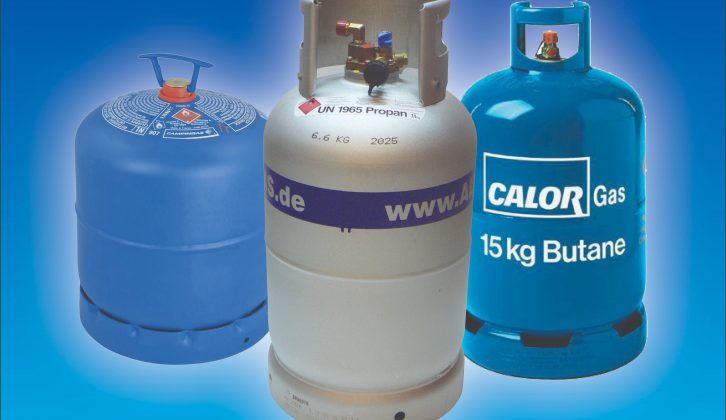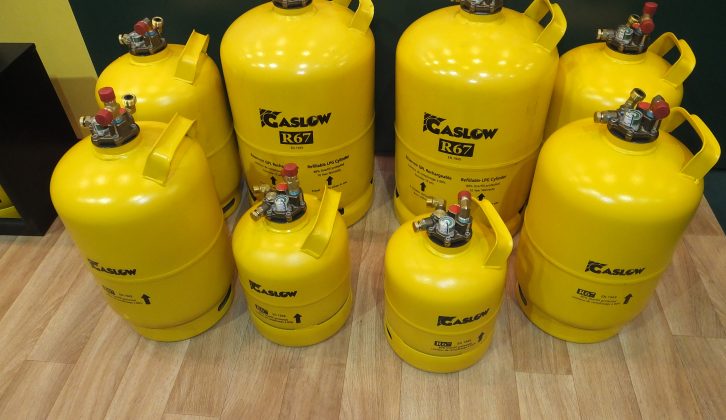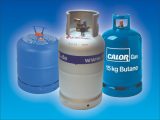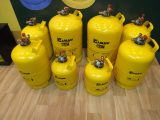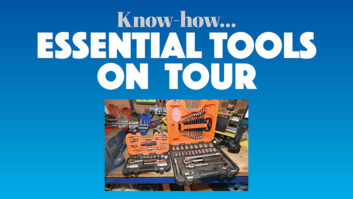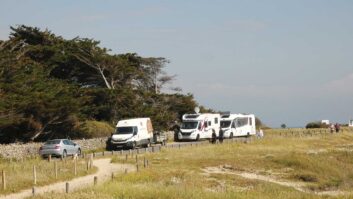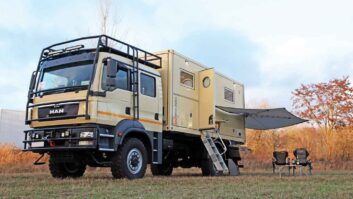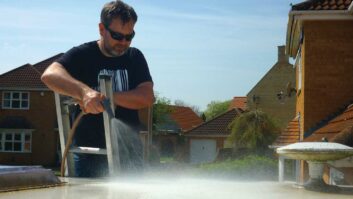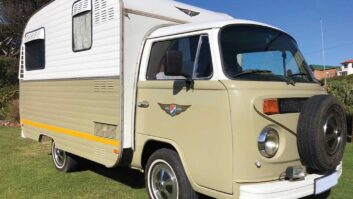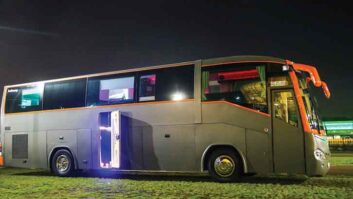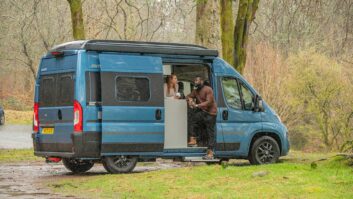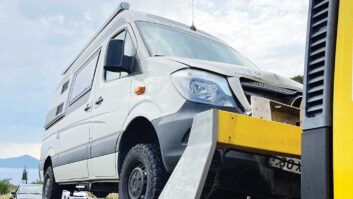In the UK, motorcaravanners use exchange gas cylinders from suppliers such as Calor Gas or Flogas, which offer both of the liquefied petroleum gas (LPG) variants – butane (blue cylinders) and propane (red cylinders).
But when you tour in Europe, you won’t find Calor Gas or Flogas outlets providing an exchange service for UK gas cylinders. So which exchange cylinders can you use when you are travelling further afield?
Campingaz has a range of butane gas cylinders and appliances, widely available at caravan and motorhome dealers in Europe, but at a premium.
Regulator required
For older installations, where the pressure regulator is fitted directly to the gas cylinder, a Campingaz-specific regulator will be required.
This is available with a short length of connecting hose for about £20, and replaces your existing regulator and gas locker flexible piping.
If your gas installation is the modern type, which has a bulkhead-mounted regulator, you’ll also need an adaptor (I use the Gaz1 from Hamilton Gas Products) for each Campingaz cylinder, which is used in conjunction with the Butane Nut x W20 Pigtail.
This works very well in summer, but the characteristics of butane mean it will not work as efficiently in the Alps during winter.
Butane and propane are petroleum distillates and have roughly the same amount of energy per liquid litre, butane slightly more.
Both have a minimum temperature at which the fuel turns from liquid to gas at ambient pressures. For butane, this is about -1°C; for propane, about -41°C. So if it’s freezing hard outside, your butane gas will remain in its liquid state. Propane is the fuel to use in the cold.
The temperature effect is magnified because, when a liquid turns to gas (boils) as it is being used, it absorbs energy from the surroundings, causing the liquid and container to become even colder. So it may be fine to start with, but soon slows to a near stop.
If you are camping for a long time, use the local exchange cylinders that will be available at your campsite. They will nearly always also keep a plentiful stock of bottle-mounted regulators and hose.
On one occasion, I did see a Spanish butane cylinder and regulator that had been connected to the barbecue outlet for use as a temporary inlet. I’m not convinced of the safety implications of this, but it seemed to work!
It would be better, in my opinion, to feed the new gas supply into where it is normally fed in the gas locker. If you change pipes or undo fittings, check for leaks with gas leak detecting fluid, not washing-up liquid.
Fuel-level check
Keeping an eye on gas use is simplified using modern ultrasonic sensors. The early Truma device, held against the side of the tank, bleeps low to high and lights a green LED if gas is present at that level. It shows red and bleeps high to low if there is no gas at that level. This should not be used with refillable cylinders – their internal mechanisms will cause false signals.
Later Truma systems sit under the gas bottle and connect to your phone via Bluetooth – no need to go outside.
Refillable gas systems
Most European countries sell LPG at filling stations, although it’s best to research local suppliers on the internet. Bear in mind, too, that LPG in the UK is propane, but in southern Europe, it is a blend of propane and butane, with the rations altered to fit the seasons.
Although this is sold as road fuel and includes taxes, it is still significantly cheaper than bottled gas.
LPG bought in the Mediterranean in summer is not good for winter use, because the butane part will remain liquid. So plan your filling wisely. Run the gas supply quite low and refill with propane, ready for the winter.
Gaslow and Alugas are refillable cylinders sold in the UK – both offer a range of sizes and connect to your gas system in the usual way. They can also be connected to a filling point on the side of your motorhome.
If you have two cylinders, a ‘T’ piece allows both to be filled. A float valve prevents overfilling, and a fuel sensor enables a remote gauge to be fitted.
These cylinders have burst-check valves, blow-off valves, strainers and a bottle-mounted fluid level gauge. This can be replaced with one that connects to a remote display in your vehicle. If you are concerned about payload, several kilograms can be saved by using the Alugas bottles, compared to the steel Gaslow equivalents.
Bulk gas tank
A bulk tank will free up your gas bottle locker for other important duties – barbecue equipment, perhaps? The tank is mounted under the floor, so is out of sight, but must not be out of mind. Regular inspection to check for corrosion is essential.
Many bulk gas tanks are mounted in line with the wheels, so they can be pebbledashed by stones and grit as you are driving along. However, you can fit a stout mudflap in front of the gas tank to provide some protection. Thick protective paints are available, too.
Bulk tanks have similar fittings and facilities to refillable cylinders.
Many companies specialise in fitting both bulk gas tanks and refillable cylinders. With a refillable system, a filling point is best fitted to the outside of the vehicle, so it looks the same as an LPG-powered car.
In the UK, the filling nozzle on the forecourt is placed over the filling point bayonet inlet, then turned about 90°, and a handle is pulled and latched to lock the nozzle in place.
On the pump is a large button, which must be kept depressed for the entire time while you are filling up. Your tank or cylinders will automatically shut off when they are 80% full.
In Europe, various brass adapters screw onto the UK fitting to suit the range of local nozzles.
Most LPG specialists sell sets of three filling adapters – for example, Conrad Anderson, Dave Newell and Autogas 2000, among others.
Different countries will require different types of fillers, and adapters are available to allow UK vehicles to be filled throughout Europe.
Channel crossing
Tunnel or ferry, the rules are similar when you cross to France. The main gas-control valve must be turned off before embarking.
When using the Tunnel, the quantity of gas is limited to a maximum of 47kg (about 93 litres) for a single container, and 50kg (approximately 99 litres) in the case of several containers. Each must be no more than 80% full.
LPG in the UK is propane, but in southern Europe, it is a blend of propane and butane, with the ratios altered to suit the seasons
